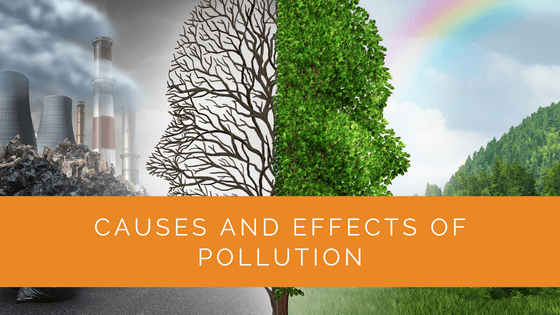Environmental pollution, a long-standing global concern, continues to pose significant challenges for our planet. This pervasive issue, resulting from various human activities, has far-reaching consequences that affect air, water, and land quality.
Pollution stems from introducing harmful substances, whether natural or man-made, into our environment. These pollutants can wreak havoc on ecosystems and human health, making addressing and mitigating their impacts imperative. In this comprehensive exploration of pollution, we will delve into its causes and effects across the air, water, and land and discuss practical steps to reduce this pressing global issue.
Contents
Key Takeaways
- Environmental pollution is a pressing global challenge driven by industrialization, urbanization, and human activities such as transportation, agriculture, and residential development.
- Pollution manifests in three main forms: air pollution (resulting from emissions of harmful gases), water pollution (caused by contamination of water bodies with chemicals and waste), and land pollution (resulting from improper disposal of garbage and pollutants).
- Leading causes of environmental pollution include transportation (vehicle emissions), industries (production of garbage and chemical waste), agriculture (use of pesticides and fertilizers), and residential areas (construction and appliance usage). Reducing pollution requires global efforts, including recycling and limiting the use of harmful products, with a focus on sustainable practices and conscious choices.
What is environmental pollution?
Though environmental pollution is not a recent concept or phenomenon, it remains one of the leading problems in the world. Due to industrialization, urbanization, exploration, infrastructure, mining, and other human activities, global environmental pollution is increasing daily.
The involvement of harmful materials or pollutants in the environment causes environmental pollution. These pollutants can be natural or man-made hazardous ingredients such as chemical or industrial waste.
Pollutants are known for damaging the quality of land, water, and air. In today’s age and time, almost every necessity produces or releases contaminants into the environment. For example, pollutants from the exhaust pipes of vehicles, burning coal for electricity generation, garbage waste in waterways, etc., are some of the everyday pollutants.
This phenomenon is most commonly visible in urban areas compared to the countryside. Multiple reasons lead to this, such as :
- The number of vehicles
- Industries
- Construction zones
- Use of pesticides and chemicals, etc.
These can also rapidly spread through air and water currents to remote places with no inhabitants.

What are the different types of pollution?
Various types of pollutants in the environment can affect the environment in different ways. There are three main types of pollution – air, water, and land/soil. Let’s learn more about them.
Air pollution
There are two types of air pollution: primary and secondary pollutants. Primary pollutants are those that are directly emitted from the source. Secondary pollutants are the ones that are caused when primary pollutants react in the atmosphere.
Sometimes, air pollution is visible in smoke from the exhaust pipes of trucks, factories, industries, etc. But the majority of the time, air pollution is invisible, and it’s challenging to identify the pollutants.
Most of the pollutants that cause air pollution are not natural. For example, burning fossil fuels such as oil, natural gas, coal, etc., and fumes produced from vehicles and industries lead to the release of carbon monoxide, nitrogen oxides, and hydrocarbons.
These pollutants can create smog, a thick fog that consists of smoke and fog. In some places with heavy smog, it can be difficult for people to see the sun. The color of smog can be gray or brown, depending on the type of pollutants.
Smog can make breathing difficult and cause significant respiratory issues, especially for older adults and children. Additionally, it also decreases the air quality in the environment.
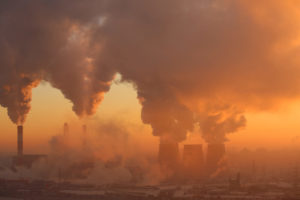
Water pollution
Water pollution is another prevalent type of pollution and is a very concerning environmental issue. When the water looks muddy, has floating garbage and other elements, smells bad, and is filled with harmful chemicals, it is polluted.
Polluted water is harmful and unsafe for consumption and swimming. Consuming dirty water with hazardous chemicals can severely affect human health. According to an estimate by The United Nations, approximately 4,000 children die every day due to the consumption of dirty water.
Additionally, polluted water affects and poses a significant threat to marine life. Oil and natural gas can leak into oceans, creating a toxic environment and affecting aquatic animals. Oil spills are one of the leading sources of water pollution.
The wetlands of the states of Louisiana and Mississippi are coated with oil. This eventually kills aquatic life, such as marsh plants, organisms, and animals, such as fishes and crabs. Besides affecting marine animals, polluted water also affects aquatic birds like pelicans, making it difficult for them to fly across or access food in the oceans.
Another major source of water pollution is the emission of fertilizers and pesticides used in agriculture and some industries. Fertilizers consist of large amounts of nitrogen and phosphorus. These ingredients can cause grave damage to the oceans and other water bodies.
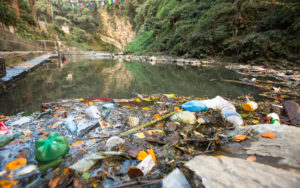
Land pollution
Some pollutants that damage the water bodies also harm the land and soil. Major pollutants are fertilizers, pesticides, and garbage waste produced by man-made activities.
Trash or garbage waste can include paper, plastic, glass jars, cans, metal products from car junk, other appliances, etc. Garbage litter contains dangerous pollutants like chemicals, oils, and ink. These pollutants can contaminate the soil, plants, animals, and people.
Inefficient and unorganized garbage collection systems contribute majorly to land and soil pollution. Very often, people dump garbage on the streets, which contributes to increasing land pollution.
Companies often produce trash or harmful garbage in such massive amounts that they run out of landfills. When this happens, landfills also leak harmful pollutants and toxic chemicals that can result in the death of many animals.
Many cities or states in the United States also burn their garbage to get rid of it. Burning the garbage also increases air pollution and releases dangerous chemicals and heavy metals into the air.
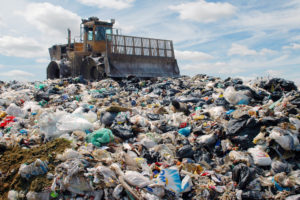
Leading causes of environmental pollution
With each passing day, the rising levels of environmental pollution are alarming. As a result, it also contributes to damaging the climatic conditions globally.
While the leading causes of environmental pollution keep increasing, some of the points mentioned below have a major impact. Here are some of the primary causes of environmental pollution across the world.
Transportation
With the growing population around the world, there is an increase in the number of vehicles. People are traveling more frequently now, and the pollution levels only increase.
Using vehicles results in the emission of harmful gases into the air, such as carbon monoxide. As everyday traffic increases more and more, so do the pollution levels.
Industries
Industries have been a major cause of pollution in our environment. Ever since the beginning of the Industrial Revolution, there has been a significant increase in pollution levels, primarily due to the growing use of fossil fuels.
Many industries produce garbage and chemical waste that causes air, water, soil, and land pollution. This is particularly visible in industries or factories that generate power, such as power plants.
Agriculture
While agriculture helps produce natural and organic products, it is equally responsible for contaminating water and soil. This is caused by several agricultural activities like using fertilizers and pesticides to produce crops and plants.
All pesticides and fertilizers are made of harmful chemicals. As agriculture gets more and more extensive, it causes further damage to the environment and ecosystems.
Residences
Though it may seem like residential areas may not contribute to the increasing pollution levels, they, too, are one of the leading causes of different types of pollution like noise pollution, thermal pollution, etc. To begin with, residential areas are built by destroying the natural environment and wildlife. This causes great disruption in the ecosystem.
Residential areas produce massive waste materials with construction work that often takes place. Additionally, using appliances like air conditioners, refrigerators, humidifiers, etc., reduces air quality and increases air pollution.
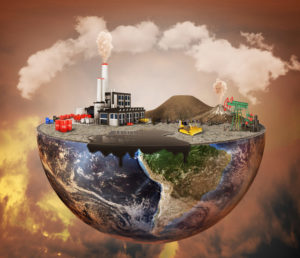
How can we reduce pollution?
Reducing pollution is one of the most talked about topics globally. Governments worldwide are fighting pollution and reducing it as much as possible. Many countries have taken the initiative to recycle trash to process valuable materials that can be used again.
With the help of recycling, communities can reduce the amount of garbage in landfills, water bodies, etc. Countries such as Switzerland and Austria recycle 50 to 60% of their garbage waste.
Governments can also pass laws limiting the usage of harmful products such as plastic, leading to a decrease in production for them. Reducing pollution requires global leadership efforts. While developed nations can work on reducing and recycling their materials, developing nations can strengthen their economic conditions without hampering the environment.
Expert Insights From Our Solar Panel Installers About the Causes and Effects of Pollution
The pollution problem we face today is largely driven by human activities like transportation and industrial processes. It’s critical to address these issues by adopting cleaner energy solutions, such as solar power, which significantly reduces harmful emissions.
Lead Solar Installer
Water pollution is particularly concerning as it affects both human health and marine life. By transitioning to sustainable practices and renewable energy sources, we can help mitigate the impacts of chemical runoff and industrial waste.
Solar Energy Specialist
Land pollution, often caused by improper waste disposal and the use of non-biodegradable materials, can be drastically reduced through effective recycling programs and the use of eco-friendly building materials.
Senior Solar Consultant
Final words
The world is witnessing one of the fastest-growing issues with increasing pollution levels. As humans, protecting the environment must be our first and foremost duty. It requires extensive planning, conscious choices, and constant effort.
Ignoring the problem will lead to greater catastrophes and affect life forms everywhere. By taking the right actions, we can significantly reduce pollution and improve our quality of living.
About the Author
Solar Panels Network USA stands at the forefront of solar energy solutions, driven by a team of seasoned solar engineers and energy consultants. With over decades of experience in delivering high-quality solar installations and maintenance, we are committed to promoting sustainable energy through customer-centric, tailored solutions. Our articles reflect this commitment, crafted collaboratively by experts to provide accurate, up-to-date insights into solar technology, ensuring our readers are well-informed and empowered in their solar energy decisions.

